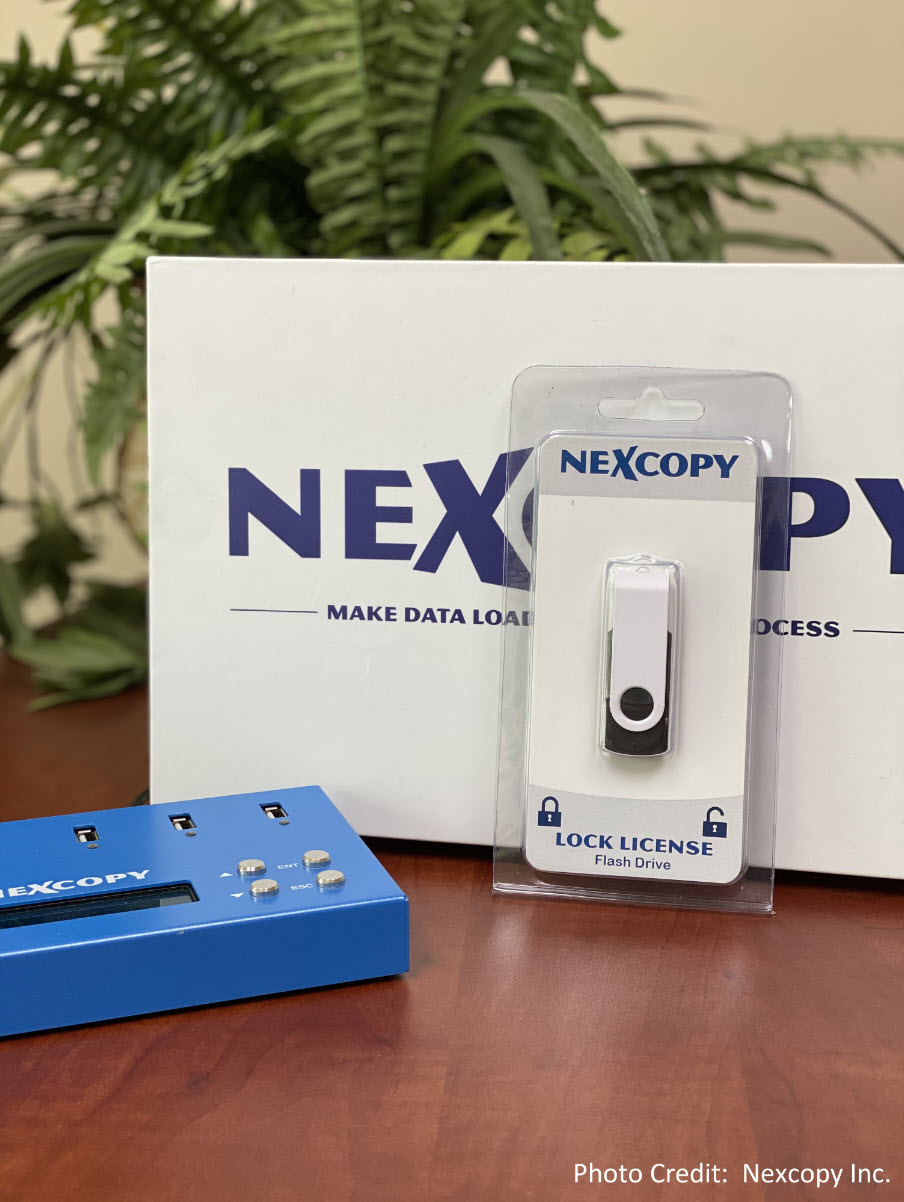
A computer virus is something we all strive to avoid because we understand the consequences and the amount of time and energy required to restore a computer to its original condition. In a recent poll by GetUSB.info when asking users to name the top three ways a computer can get a virus, they responded with:
- Link from an email
- Link from an unsecure website
- USB flash drive
However, if Nexcopy has anything to do with the last answer, a computer virus which spreads by USB flash drive will be a thing of the past.
Nexcopy is a US company based in Southern California who specializes in flash memory duplication equipment, printers, FDA compliant flash drives, copy protection and now a road-blocking malware on flash drives.
A virus will spread via a USB stick because the device is writable. In fact, any device that is connected to a computer which is writeable could spread a virus; other devices such as external hard drives, SD cards, microSD cards, etc. all have the same potential for harm.
But what happens when you turn these storage devices on their head and not allow them to be writable in the first place? This simple yet obvious solution is a gigantic step in the right direction for controlling the spread of a virus via USB.
The Lock License flash drive designed and manufactured by Nexcopy is exactly that. The Lock License drive is a USB stick which is always write protected. The device doesn't care what it's plugged into, or when, or how, the Lock License drive will always be read-only.
A virus will spread in a very specific way. A virus is designed to scan newly connected devices and ping them to see if they can spread (if the device is writable). A new device is defined by any computer system when "power" is assigned upon connection, which, coincidentally is the same time the virus will try and spread.
This "power up" is really the window of opportunity for a virus. Since the goal of a virus is to spread without being noticed, the virus itself will not constantly ping to see if something new is available, but rather only activate when a new device is detected.
Since the Lock License drive is always write protected whenever connected to a host, the virus will do what it does and determine the Lock License drive is not writable and go back into hibernation.
The Nexcopy solution is based on hardware inside the flash drive, this is not a software solution. The write protection is configured at the controller level of the drive, on the chip itself. Software will not break down the write protection configuration of the Lock License drive.
So how does one get data onto a Lock License drive?
For the IT professional or users being extra careful, one can use scanning software or anti-virus software to scan their computer system to make sure it is clean or scan the USB flash drive to double check it is clean. Whether these steps are included or not doesn't really matter, the real take away is the user defines when the drive becomes writable.
The Lock License drive is always readable by any user, on any system, in any environment. However, there is a password which is required to temporarily remove the write protection. The word "temporary" is key here because when the power is cut from the device, the drive goes back to a read-only state. There is no additional step to write protect the drive, simply disconnect and the Lock License drive is back to read-only.
Said another way, this is a full proof way to insure the drive is always write protected.
The first time a user asks the drive to become writable a password is required. This password is the only way to allow the device to be unlocked and writable. This all important step in the process of giving control back to the user on "when" the drive is writable. This elegant approach is a huge step in the right direction for eliminating a virus to spread via USB flash drive.
Encryption is used for when the password is sent to the Lock License drive so prying eyes will not skim the code during the process. The password is the only method to make the drive writable and if the password goes missing, the drive will be read-only forever. There is no back door or safety net to unlock the drive at a manufacturing level or rest level.
It is important to note, and using a bit of logic, of course someone could allow the Lock License drive to be writable and allow a virus get in, but the overall point of this solution, is giving the control back to the user on when the drive is accessible and writable.
The Nexcopy Lock License drive is available in USB 2.0 and USB 3.0 technologies and available in capacities ranging from 2GB through 256GB. Custom print is available at no extra charge. Minimum purchase quantity is 20 units.